City guides


Things to do in Richmond
The capital of Virginia, Richmond is not only rich in American history, but is also a modern urban space where visitors will find something to suit every taste.
In terms of history, Richmond certainly delivers. Home to some incredible museums and historical sites, such as St John's Episcopal Church, The American Civil War Museum and the Virginia Museum of History and Culture, those with an interest in the American Revolution and the Civil War will be very happy here. The State Capitol is a favourite with visitors.
For those with less interest in history and more in the arts, the Virginia Museum of Fine Arts houses a world-class collection of classical American and European sculptures and paintings. Visitors will also enjoy the River District where trendy restaurants can be found occupying century-old warehouses and bands entertain crowds on the lawns of Brown's Island. For lovers of science and the more left-brain thinkers among tourists, the Science Museum of Virginia will not disappoint.
Whatever their interests, there is something to keep all visitors to Richmond entertained and those travelling with kids will find the city very family-friendly.
Capitol Square
Richmond's Capitol Square is an oasis of old trees, statues and green lawns perched on a hilltop in the heart of the downtown area. The magnificent centrepiece is the neoclassical …
Capitol Square
Richmond's Capitol Square is an oasis of old trees, statues and green lawns perched on a hilltop in the heart of the downtown area. The magnificent centrepiece is the neoclassical State Capitol building, designed by Thomas Jefferson, which has been in continuous use since 1788. In its rotunda stands a life-sized statue of George Washington, Virginia's most treasured artwork. The Governor's Mansion, home of Virginia governors since 1813, has been restored and contains its original woodwork, plaster cornices and ornamental ceilings, while other historic buildings in the square include the old Bell Tower, dating from 1824 and the neoclassical Old Finance Building.
Website www.vacapitol.org/square.htm

Museum and White House of the Confederacy
Civil War buffs flock to the Museum of the Confederacy, which houses the most comprehensive collection of Confederate artefacts, personal memorabilia, and art to be found anywhere …
Museum and White House of the Confederacy
Civil War buffs flock to the Museum of the Confederacy, which houses the most comprehensive collection of Confederate artefacts, personal memorabilia, and art to be found anywhere in the United States. The exhibits include artworks, 550 battle flags and 215 uniforms, including those of well-known officers. Beside the museum is the White House of the Confederacy. Tours are available of the 1818 mansion in which Confederate President Jefferson Davis and his family lived during the Civil War, and the property is still furnished with original items.
Website acwm.org/white-house-of-the-confederacy/
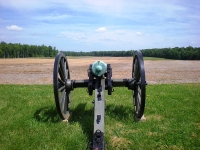
Richmond National Battlefield Park
Union armies repeatedly set out to capture Richmond, strategic capital of the Confederacy, and end the Civil War. Three of those campaigns came within a few miles of the city. The …
Richmond National Battlefield Park
Union armies repeatedly set out to capture Richmond, strategic capital of the Confederacy, and end the Civil War. Three of those campaigns came within a few miles of the city. The park commemorates 13 different sites associated with those campaigns, including the battlefields at Gaines' Mill, Malvern Hill and Cold Harbor. In 1865, President Abraham Lincoln made a historic visit to the battlefields of Richmond days before his assassination, urging an end to the war. Established in 1936, the park protects 763 acres (308 ha) of historic ground. There are roughly seven miles (11.2km) of well-maintained walking trails around the battlefields.
Website www.nps.gov/rich
Virginia Museum of Fine Arts
Richmond boasts an exceptional Fine Arts Museum, which presents a panorama of world art from ancient to modern, including the largest public Faberge imperial Easter egg collection …
Virginia Museum of Fine Arts
Richmond boasts an exceptional Fine Arts Museum, which presents a panorama of world art from ancient to modern, including the largest public Faberge imperial Easter egg collection outside of Russia, consisting of roughly 150 jewel-encrusted creations made for Tsars Alexander III and Nicholas II. The Museum is also home to a collection of English silver, one of the world's leading collections of the art of India, Nepal and Tibet, and six Gobelin Don Quixote tapestries.
Website vmfa.museum
St John's Episcopal Church
St John's Church has stood on Richmond Hill above the James River since 1741, and is known for having been the venue for the second Virginia Convention in 1775, attended by George …
St John's Episcopal Church
St John's Church has stood on Richmond Hill above the James River since 1741, and is known for having been the venue for the second Virginia Convention in 1775, attended by George Washington and other historic personalities. The church is also where legendary Pocahontas was baptised and married to John Rolfe. The wooden building is still home to its original pulpit and some exquisite stained-glass windows. Between May and September, living history performances are given every Sunday recreating the historic Second Virginia Convention. Informative tours explore the historic significance of the church building and grounds.
Website www.historicstjohnschurch.org
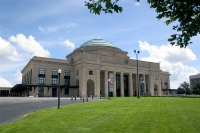
Virginia Science Museum
The hands-on Virginia Science Museum allows visitors to touch, observe and explore the impact of science on their lives, covering everything from astronomy to computers to flight e…
Virginia Science Museum
The hands-on Virginia Science Museum allows visitors to touch, observe and explore the impact of science on their lives, covering everything from astronomy to computers to flight engineering. Live demonstrations are given daily on each level. Level One has programmes aimed at younger children, while the demonstrations on Levels Two and Three include animal dissections. Other special events are held regularly, with schedules available on the website. The fascinating and fun museum is complemented by The Dome, which at 76 feet (23m) is the largest screen in Virginia. It's 45-minute features cover everything from the Amazon rainforest to astronomy.
Website www.smv.org
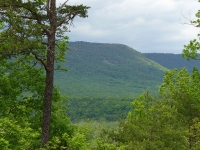
Shenandoah National Park
Following the Blue Ridge Mountains for 100 miles (161km) through western Virginia, the Shenandoah National Park is a nature reserve where tens of thousands of animals, including de…
Shenandoah National Park
Following the Blue Ridge Mountains for 100 miles (161km) through western Virginia, the Shenandoah National Park is a nature reserve where tens of thousands of animals, including deer and black bears, roam among richly forested slopes. More than 500 miles (800km) of hiking trails snake through the area from the azalea-trimmed Skyline Drive, the 105-mile (169km) long road that runs through the park from the Piedmont Plateau, providing wonderful vistas of the Shenandoah Valley from its overlooks. A free event called Wildflower Weekend is celebrated in May and will appeal to lovers of wild flowers and nature-themed art, and ranger-led tours and programmes are offered between April and October. There are also special activities for kids.
Website www.nps.gov/shen
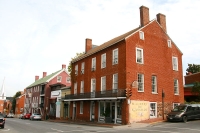
Lexington
The sedate town of Lexington, 138 miles (222km) west of Richmond in the Shenandoah Valley, contains one of the most picturesque downtown areas of old buildings in America. Tourists…
Lexington
The sedate town of Lexington, 138 miles (222km) west of Richmond in the Shenandoah Valley, contains one of the most picturesque downtown areas of old buildings in America. Tourists visit the town simply for its ambience, and perhaps to pay tribute to Civil War General Robert E. Lee, who was eventually buried in Lexington along with his famous horse, Traveller. There are many fun outdoor activities and attractions in Lexington, with scenic routes such as the Appalachian Waters Scenic Byway, Blue Ridge Parkway and Rockbridge Rides. Geocaching, hiking, canoeing, horseback riding and golf are all popular activities, while local orchards, wineries, breweries and coffee roasteries also offer tastings in the scenic greater Lexington region.
Website www.lexingtonvirginia.com
Mount Vernon
One of Virginia's most popular tourist attractions and the highlight of any historical Virginia tour is the colonial estate of George Washington, Mount Vernon. Since its private pu…
Mount Vernon
One of Virginia's most popular tourist attractions and the highlight of any historical Virginia tour is the colonial estate of George Washington, Mount Vernon. Since its private purchase in 1858, it's been restored and kept as a historic monument. Consisting of 500 acres (202ha) situated on the Potomac River, the gardens, mansion and other buildings are open to the public, and costumed employees demonstrate life in the 18th century. Visitors can even tour Washington's Tomb, which holds ceremonial wreath-layings at 10am and 2pm. In 2007, Mount Vernon was given permission to reopen Washington's distillery, which now produces its own whiskey. The estate also offers cruises on the Potomac River.
Website www.mountvernon.org
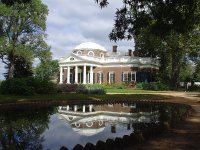
Monticello
Monticello was the estate of Thomas Jefferson, third president of the United States and author of the Declaration of Independence. The distinctive neoclassical building of the main…
Monticello
Monticello was the estate of Thomas Jefferson, third president of the United States and author of the Declaration of Independence. The distinctive neoclassical building of the main house was designed by Jefferson himself, furnished with a blend of original and replica pieces. Jefferson's time at Monticello is surrounded by controversy regarding his treatment of his slaves. Monticello has several multimedia exhibitions that deal frankly with the president's slave ownership. The outbuildings and gardens are all open to the public, and offer some stunning sights with beautifully cultivated flower gardens. The gardens are also home to the Center for Historic Plants, a project started by Jefferson himself.
Website www.monticello.org


